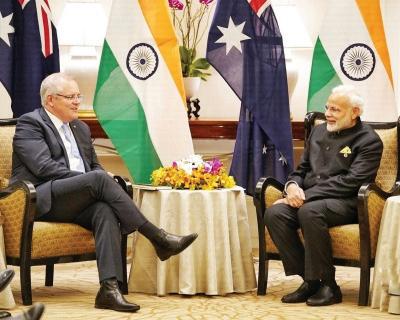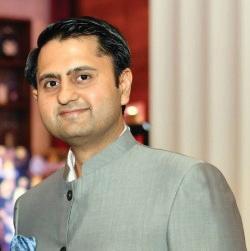
2 minute read
Build India literacy for a lasting relationship
In 2012, Ken Henry was delegated by then Prime Minister Julia Gillard to develop the ‘Australia in the Asian Century White Paper 2012’ which recommended Australia expanded its strategic net in Asia, engaged with Indonesia and rising power India, and shaped the future of the region. The Varghese report too said that engaging India was no more an option, but a necessity. But importantly, both reports recognised that policy-making is not a purely government task but a joint exercise involving academics, scholars, artists, analysts and institutions that possess the knowledge and expertise on the region and regional matters. Varghese went a step ahead to posit that the ‘Australian government neither has the capacity not the inclination’ to implement the strategy on its own.

Advertisement
Therefore, for the long-term future of bilateral relations, creating Constituencies of Country Champions is paramount, so as to shape strategic thinking, influence policymaking policies and facilitate people-to-people interactions on a sustainable basis.
This requires a three-pronged approach. In the immediate term, focussing on people and institutions possessing the requisite country expertise, lived experiences and professional linkages. In the intermediate term, drawing upon the recommendations of research works and government reports, notably, the Melbourne Declaration on educational Goals for Young Australians, 2008, which noted, “India, China and other Asian nations are growing and their influence on the world is increasing. Australians need to become ‘Asia literate’, engaging and building strong relationships with Asia”. And in the longterm, encouraging schools and universities for introducing courses and programs on India; not only support the existing institutions specialising on India-Australia studies, but also creating new ones. The United States and Singapore are two examples where people and institutions possessing country expertise have played a vital role in shaping strategic thinking, lobbied as peace advocates during testing times, and bolstered a vibrant and well-informed Constituency of Country Champions.
Now, Australia must solve its Asian literacy (term “Asian literate” was coined by Stephen FitzGerald in his essay ‘National Education Policy and Asian Studies’, 1988) conundrum, which has fuelled debate among academics and policymakers for decades. FitzGerald considered Asian literacy central to Australia’s performance’, something that Lee Kuan Yew also endorsed saying that knowing Asian values did not mean becoming Asian, but developing the ability to engage better.
Asian literacy is not just language proficiency. It is about understanding values, customs, traditions, socio-political and cultural nuances to decode how a nation thinks and acts in one way or the other. It requires familiarising oneself with Asian history, values and culture early in school, alongside developing language skills and undertaking country visits as a part of immersion programs or other study visits. Unfortunately, a steady decline across Australian primary and secondary schools in Asian language and history teaching has made Australia knowledge-deficient on Asia, especially India and Indonesia. During school dropoff/pickup hours it is common to see Asian kids conversing with their Asian parents in English, rather than in a native language. While English learning is equally vital, developing Asian multilingual proficiency and country knowledge would trigger intellectual curiosity in young minds, which can be tapped and satiated by universities later. Of all the higher degree institutions, Hindi course was being offered only at the Monash University and that has also now been reportedly shut. That is the state of Asia/ India literacy in Australia.










